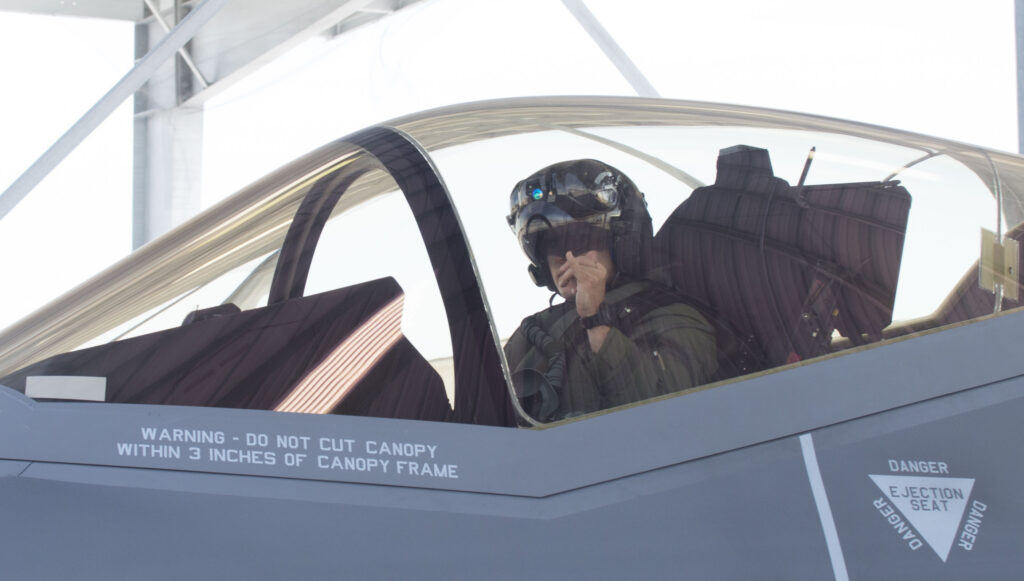JPO Launches Team To Look At 5 F-35A Luke AFB Hypoxia Events
Posted on

An Air Force pilot, Lt. Col. Chris Pitts, in the cockpit of his F-35A.
WASHINGTON: The two Air Force F-35As scheduled to cross the Atlantic Ocean and fly at the Paris Air Show are still scheduled to go after Luke Air Force Base declared a one-day stand-down to brief pilots on five apparent hypoxia incidents afflicting pilots there since May 2.
“The F-35 Joint Program Office, along with the U.S. Services and Industry experts, is conducting a comprehensive review of the facts and circumstances surrounding physiological episodes (PE) recently experienced at Luke Air Force Base, Ariz.” JPO spokesman Joe DellaVidova says in a statement. “The ongoing JPO review is being conducted by a joint government and industry team of engineers, maintainers, and aerospace physiologists from the JPO, the Air Force Lifecycle Management Center, Naval Air Systems Command, Lockheed Martin, and others.”
An Air Force spokesman, Capt. Mark Graff says in a statement today that “Air Force senior leaders are aware of the incidents and are providing support and resources as necessary to protect pilots.” The JPO’s experts will share whatever information information they glean “across the F-35 enterprise and with partner nations.”
Hypoxia is an extremely dangerous condition and is often extremely difficult to prove clinically. Pilots in the F-22, F-18 and T-45 have all been subject to hypoxia-like symptoms. It took the Air Force years to convincingly demonstrate they had fixed the problem. The Navy has effectively suspended large parts of pilot training while it tries to figure out what’s wrong with the T-45 trainer.
The 56th Fighter Wing at Luke Air Force Base, Arizona, cancelled local flying operations today for F-35A Lightning II aircraft due to a series of five incidents in which pilots have experienced hypoxia-like symptoms.
According to base officials, since May 2, five F-35A pilots assigned to Luke Air Force Base have reported physiological incidents while flying. In each case, the aircraft’s backup oxygen system operated as designed and the pilot followed the correct procedures, landing the aircraft safely.
The Air Force statement makes the service’s focus on pilot safety clear. “The Air Force takes these physiological incidents seriously, and our focus is on the safety and well-being of our pilots,” said Brig. Gen. Brook Leonard, 56th Fighter Wing commander. “We are taking the necessary steps to find the root cause of these incidents.”
Wing officials are sitting down with U.S. and international pilots today. Pilots will be briefed on all the incidents and told how their colleagues used backup oxygen to help them land safely. The 56th Operations Group will hold an open forum to let pilots discuss any concerns pilots may have.
Subscribe to our newsletter
Promotions, new products and sales. Directly to your inbox.
